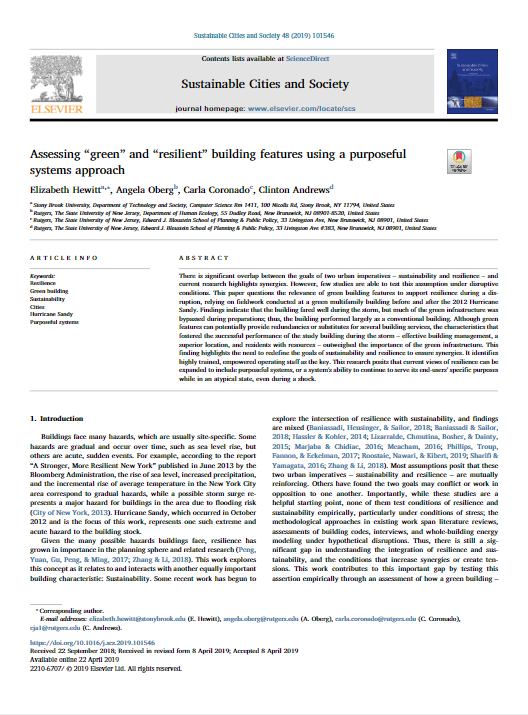There is significant overlap between the goals of two urban imperatives – sustainability and resilience – and current research highlights synergies. However, few studies are able to test this assumption under disruptive conditions. This paper questions the relevance of green building features to support resilience during a disruption, relying on fieldwork conducted at a green multifamily building before and after the 2012 Hurricane Sandy. Findings indicate that the building fared well during the storm, but much of the green infrastructure was bypassed during preparations; thus, the building performed largely as a conventional building. Although green features can potentially provide redundancies or substitutes for several building services, the characteristics that fostered the successful performance of the study building during the storm – effective building management, a superior location, and residents with resources – outweighed the importance of the green infrastructure. This finding highlights the need to redefine the goals of sustainability and resilience to ensure synergies. It identifies highly trained, empowered operating staff as the key. This research posits that current views of resilience can be expanded to include purposeful systems, or a system’s ability to continue to serve its end-users’ specific purposes while in an atypical state, even during a shock.
Assessing “green” and “resilient” building features using a purposeful systems approach
Citation:
Hewitt, Elizabeth; Oberg, Angela; Coronado, Carla; Andrews, Clinton. (2019) “Assessing “green” and “resilient” building features using a purposeful systems approach” Sustainable Cities and Society 48 (2019) 101546. https://doi.org/10.1016/j.scs.2019.101546
